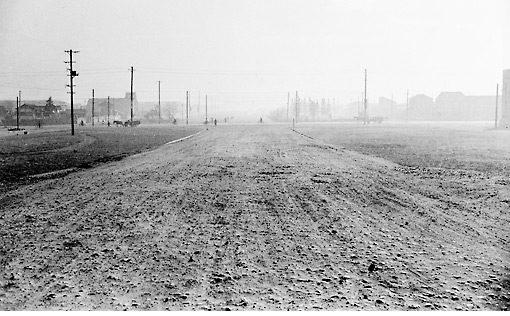
Peace Boulevard under construction 1953 Ote-machi 3-chome
What should we do to build peace? Yuichiro Sasaki's photographs reveal one answer to this question.
In Hiroshima, which was reduced to ashes by the A-bombing, citizens worked hard to reconstruct the city, in spite of their wounded bodies and hearts. Images of people who were wielding their mallets on the scorched land, people who were collecting waste articles out of the debris, and people who were carrying buckets of water to slanted barracks?all of these must have been the image of building peace.
No matter how beautiful and modern the city has been reconstructed to become, the lives lost in the A-bombing will never be brought back. However, keeping the painful memories to themselves, citizens were jointly engaged in the construction of Peace Memorial City Hiroshima. To live like human beings again and pave the way for their children's future, peace has been constructed in people's minds.
The Peace Memorial City, Hiroshima, is still under construction. To build a true peace city on a cornerstone created from many sacrifices and much patience, we have to continue to make tireless efforts.
Sasaki's photographs will help us return to the basics of Hiroshima.
Persons and institutions/companies who supported this exhibition
(titles omitted, unordered)
Kiyomi Sasaki, Yugo Shioura, Hideko Tsuchiya, Asahi Shimbun Campany, Chugoku Shimbun Campany, Mainichi Shimbun Campany
